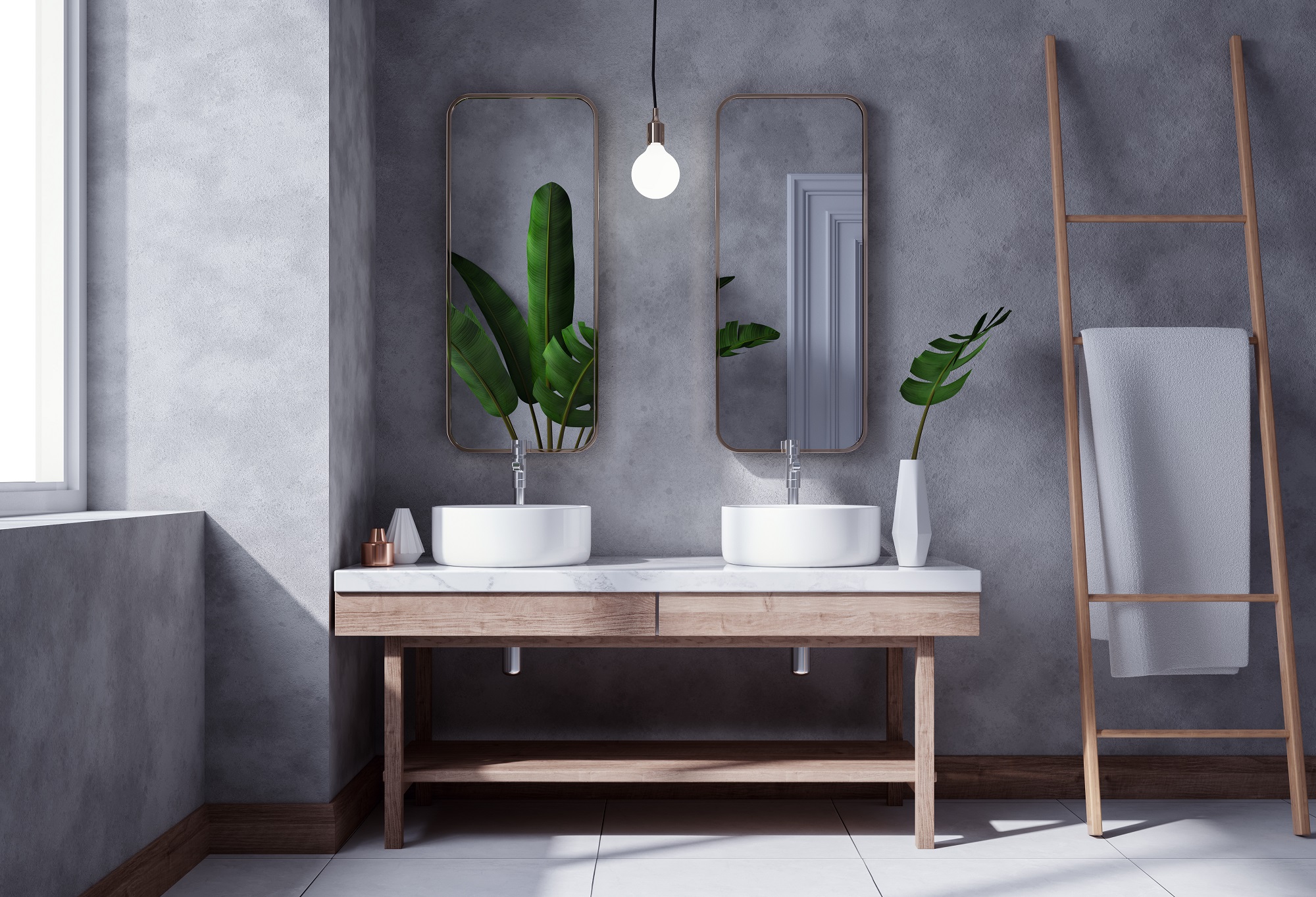Until recently, a concrete surface was associated with the initial phase of renovation, requiring finishing works. Nowadays, interior design trends eagerly encourage the use of concrete as an attractive element for decorating virtually all surfaces in a home interior. What’s more, this material allows to introduce to our interior this exceptionally austere and ascetic vibe, characteristic of New York’s industrial lofts. In our article we will give you some tips on how to use decorative concrete when arranging a flat in order to fully discover its potential.
A few words about concrete
Rough concrete surfaces are making a big comeback in the interior design. They are becoming the epitome of modern industrial spaces, minimalist or even ascetic interiors, as well as freshness emanating loft arrangements. Concrete is a material with extraordinary potential. Versatile and malleable, it can take on a variety of forms, making it extremely easy to incorporate into a space decorated in virtually any style. Its unique properties, such as its durability, high water absorption capacity as well as high resistance to external factors were known to humans as early as 5 000 years ago… and it has been successfully used to this day.
What arrangements should concrete be used in?
The times when concrete was associated with a general renovation are gone forever. The appreciation of its decorative qualities by interior designers has resulted in one of the most interesting trends of the present times. What arrangements will decorative concrete work best in? Basically, concrete can be used in any possible arrangement. The already mentioned loft and industrial styles have become particularly fond of decorative concrete, combining it very successfully with metal, red and white bricks as well as wood. Elements made of this material will also work well in a minimalist style. They will complement the simplistic form arrangement, providing a perfect, undistinguished background.
In order to meet the needs of their customers, manufacturers of concrete elements have expanded their offer with concrete slabs available in many sizes, textures, shapes, levels of roughness and colours. Concrete slabs in a warm yellow-beige shade can be successfully used in the classic style arrangements.
Ideas for using decorative concrete
There are indeed many ideas for using decorative concrete in interiors. Thanks to its durability and ease of cleaning, it will work well in any room. Unlike other materials used in interior design, concrete does not fade, does not absorb stubborn dirt and is resistant to abrasion, which, combined with its visual charm, makes it an ideal material for decorating a home or office interior.
Decorative concrete can be very successfully introduced as an arrangement base in the form of concrete panels mounted on the wall as well as a floor. There are floor tiles available on the market that faithfully imitate structural concrete. This material blends in perfectly with wood, so we can warm up the design by choosing wooden or wood-like doors.
The neutral shade of concrete also allows for much bolder arrangements, in which we can combine it with saturated and intense colours, such as violet, orange or the extremely fashionable Viva Magenta shade. An equally successful, although less daring experiment, will be the combination of the grey of concrete with black and white.
Concrete in the interior is an excellent option for any room in the house. From the hall to the kitchen, bathroom and living room. Regardless of whether we decide to use it on the wall or floor, it will certainly be an extremely modern, aesthetically pleasing and successful project.

